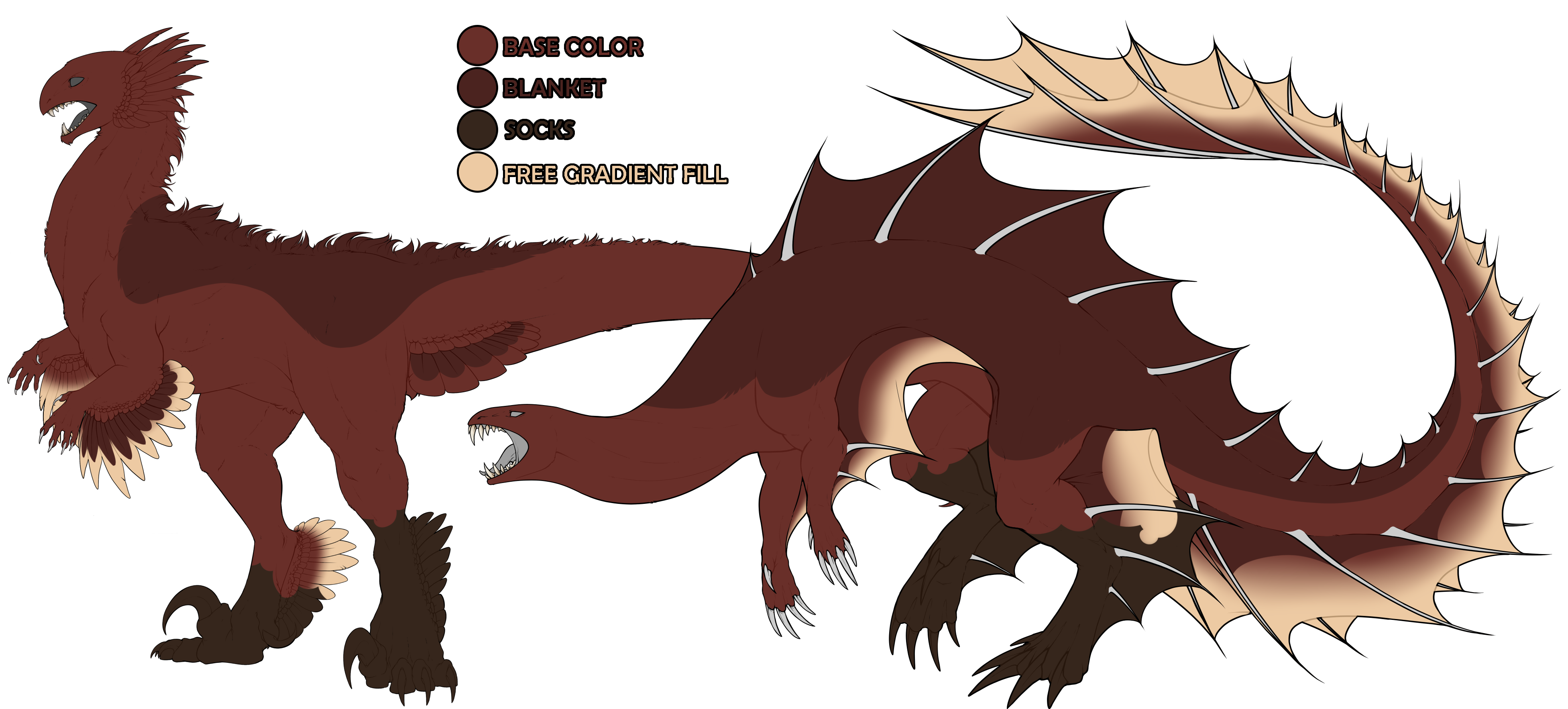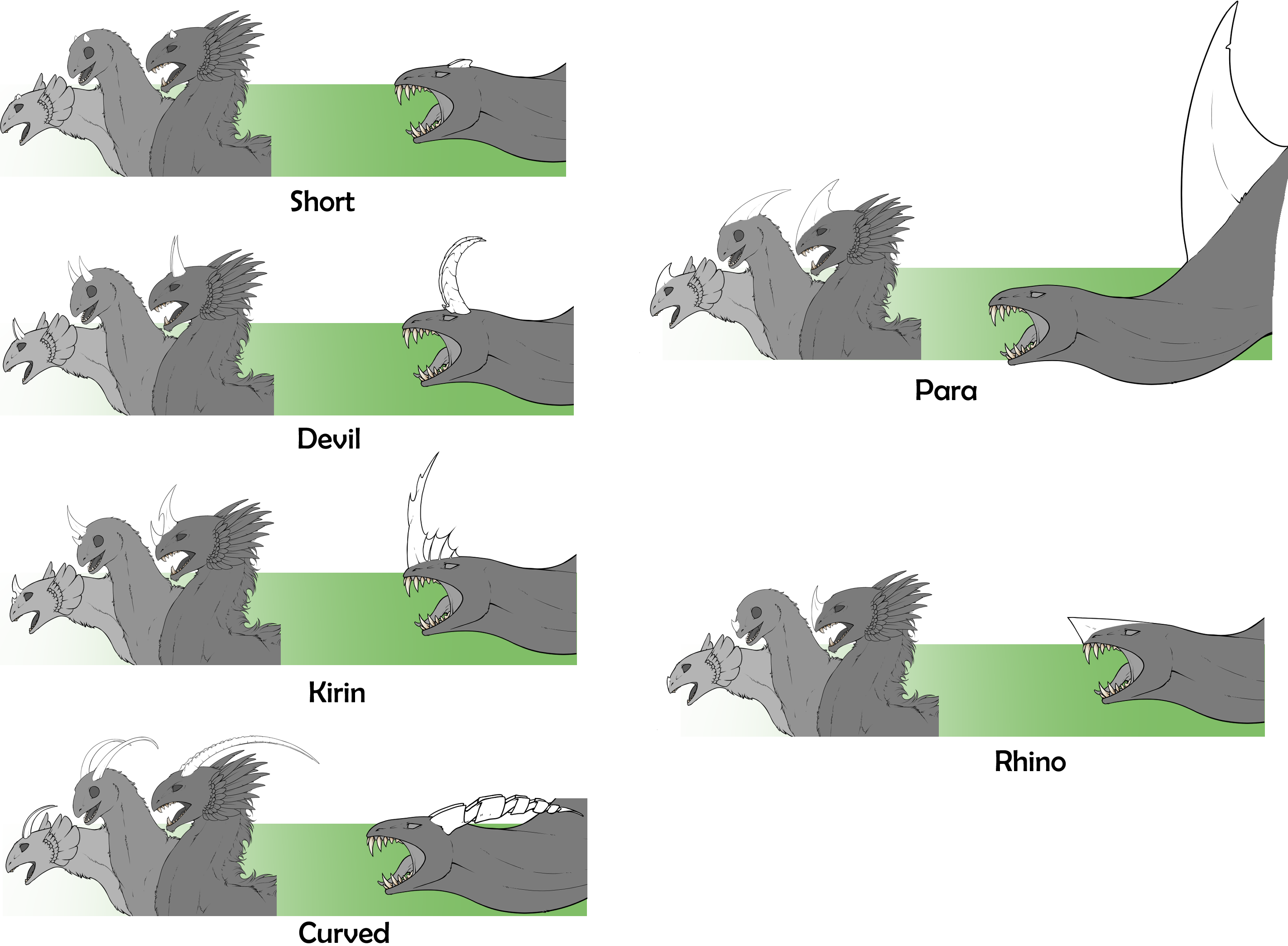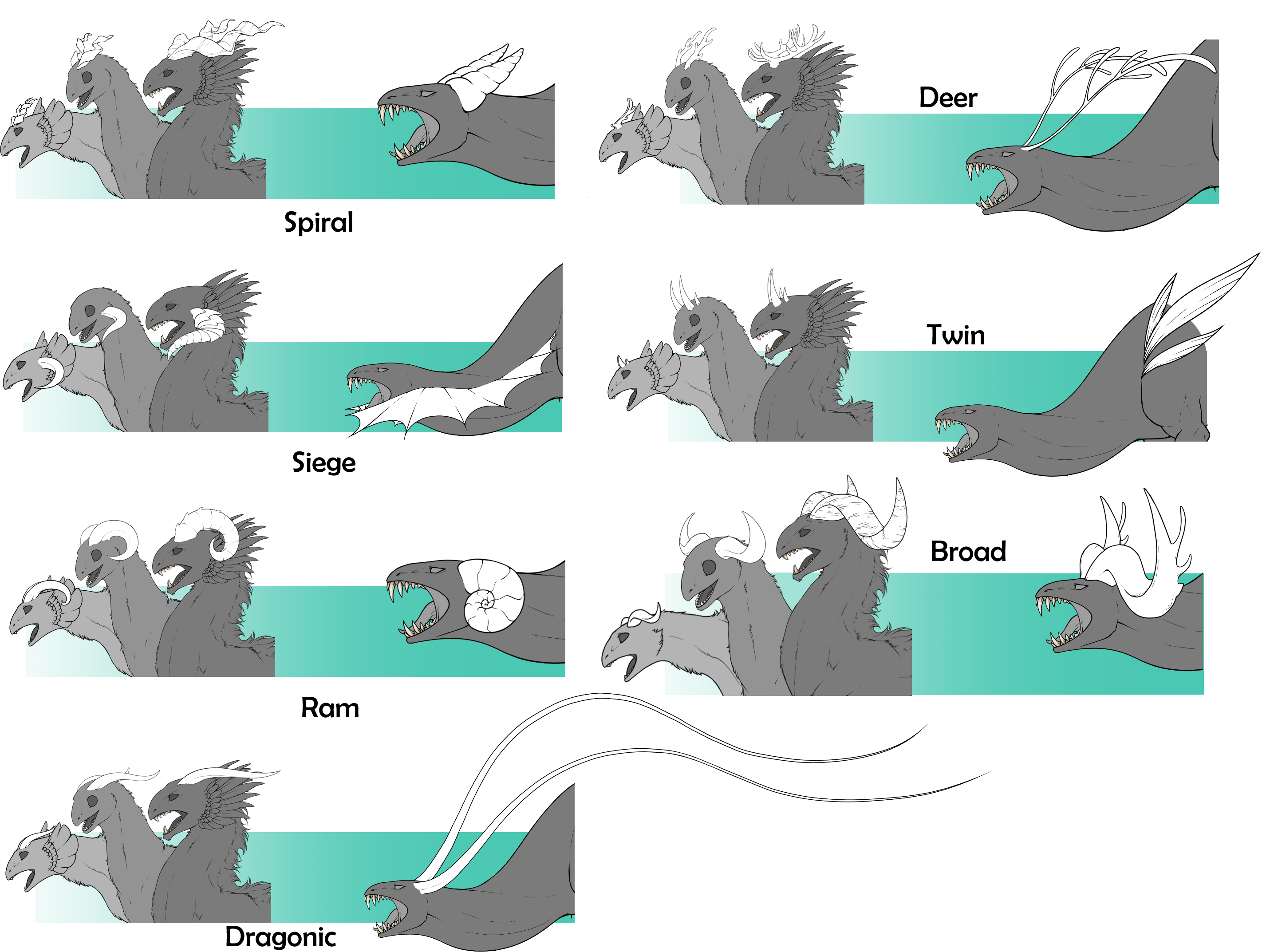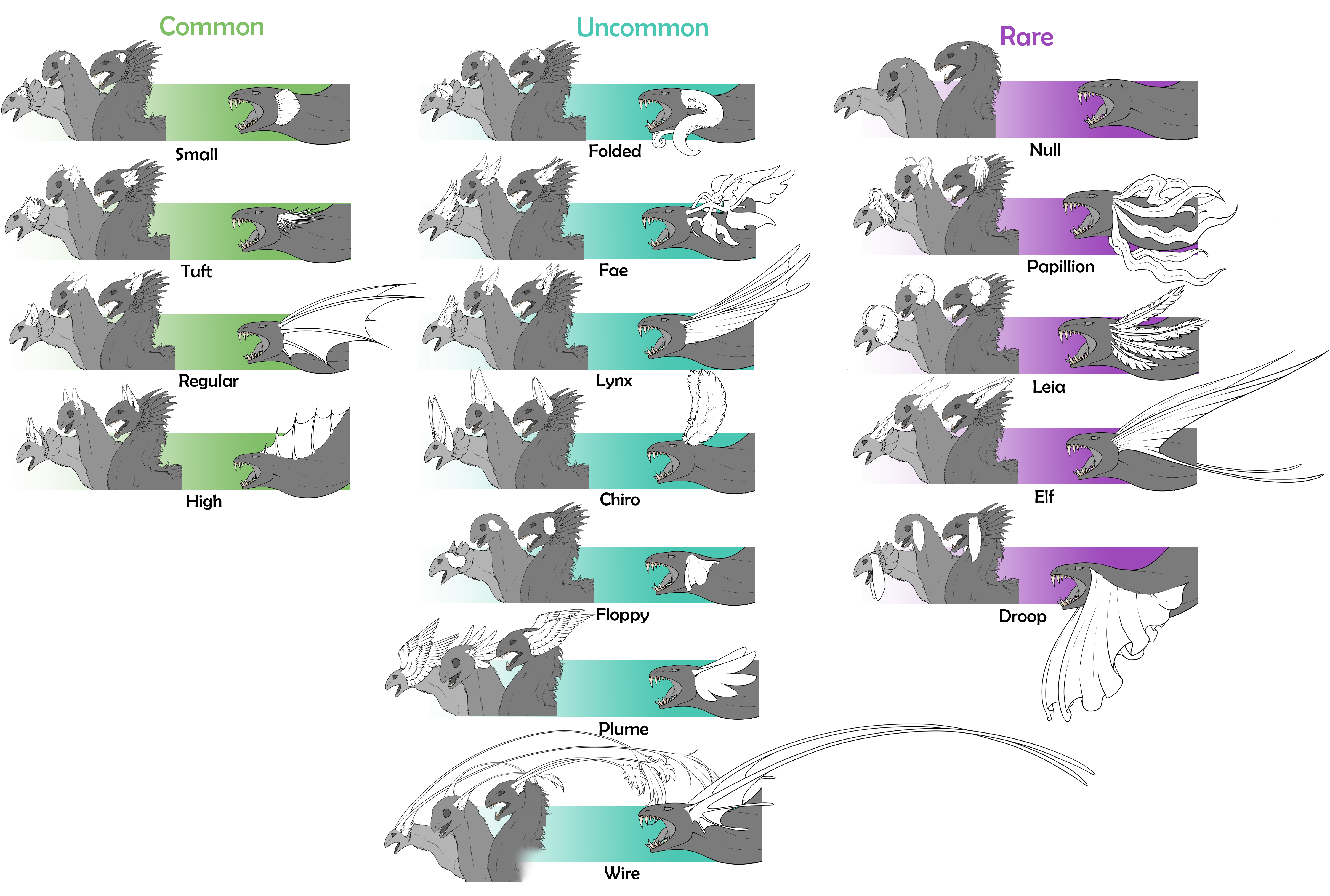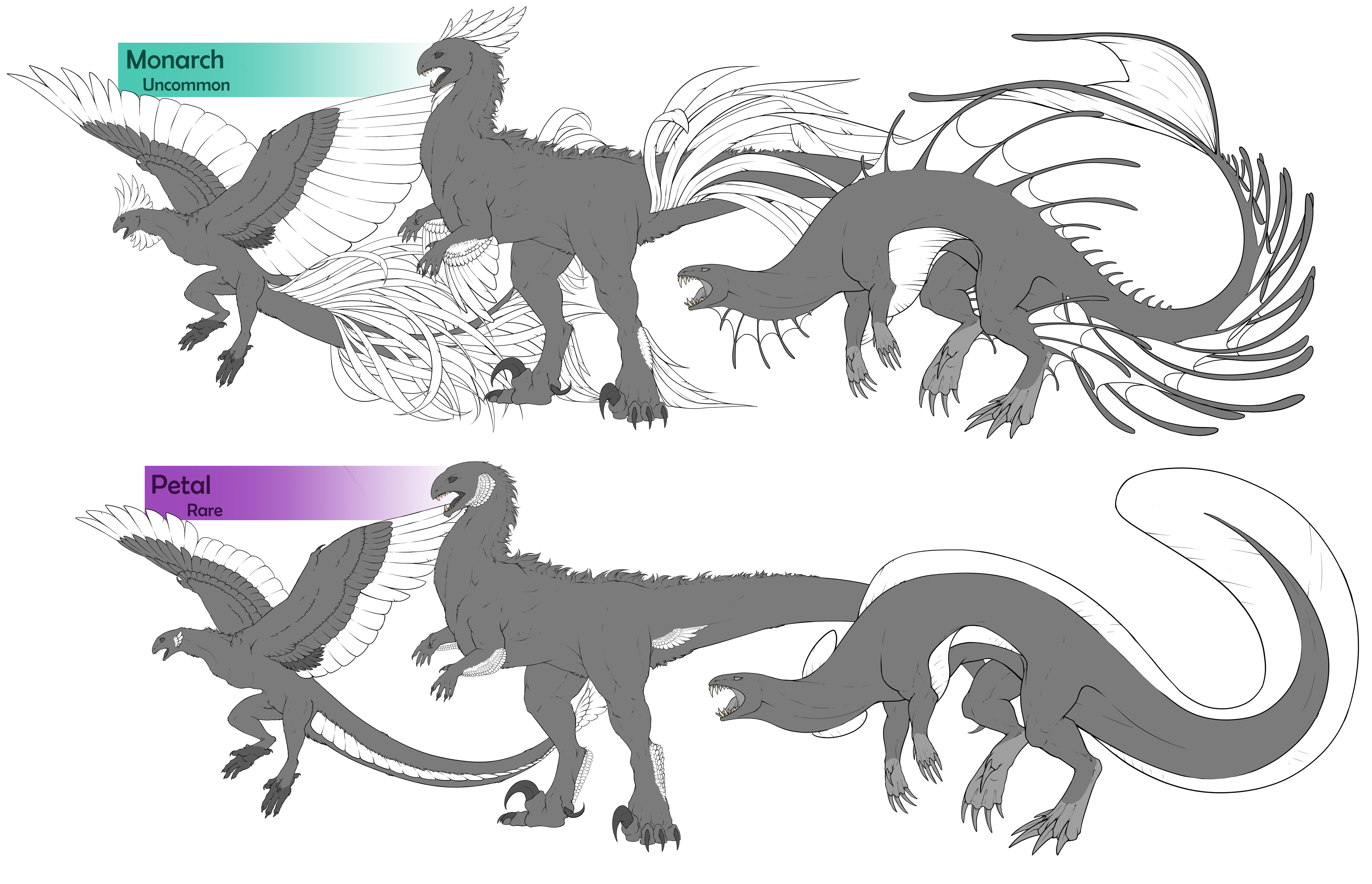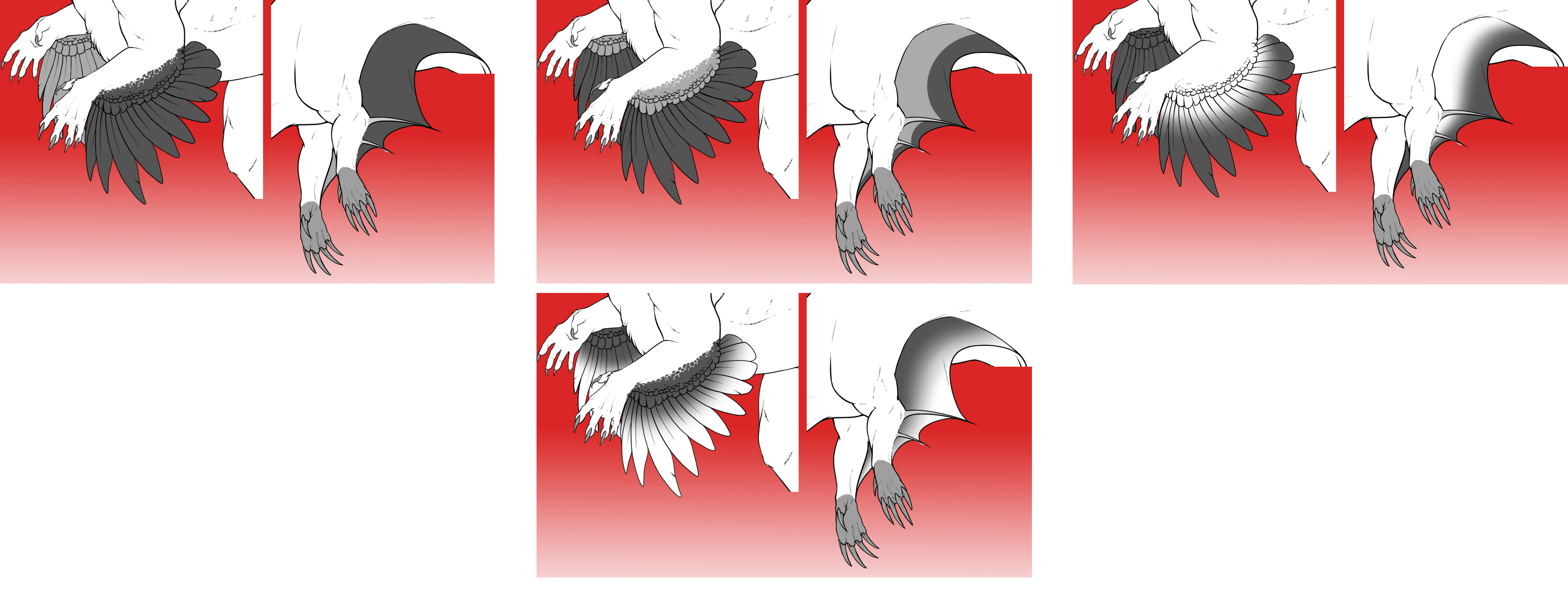Physical Traits
Traits will be listed in your geno, normally appearing on the 4th, 5th, and 6th lines depending on the traits your kukuri have!
The 4th line will always contain the Ears/Pinna and Horns/Esca. Every kukuri has these traits, even those with the Hornless mutation.
The 5th and 6th line will contain either the Ruffles/Tails or the Feathers/Fins. Not every kukuri has these, sometimes a kukuri will lack both of these lines. Sometimes they will have both. Prairies, and Aerials always have feathers and Aquatics always have fins. Commons don't have either of these. All breeds may have ruffles or tails!
Horns and Esca
Horns and Esca may be colored freely, using any colors permitted by the kukuri's basecoat. It can, and frequently does,
mimic markings found on the body. They can also be simple gradients or solidly colored... all up to you!
- Ears and horns are completely within the minimum black and white range, using it to your advanage is encouraged!
- Natural pinks may be used on the inner flesh of the ear, regardless of the basecoat.
- Normal color rules apply, meaning blue, purple, green and shades between those can only be used by azure or jade,
or raven/pearl/ebon/velvet kukuri that has a jade/azure parent.
Horns may be shaded, however be sure to not accidentally mimic Glaze!
the appearance of some traits might vary inbetween females and males, these examples are of males
Ears and Pinna
Ears and Pinna may be colored freely, using any colors permitted by the kukuri's basecoat. You can change the inside of the ear to show a different color or give the ears a nice accent. Let your imagination run wild!
Tails and Ruffles
Tails and Ruffles give kukuri a thick coating of fur (or a short tail), giving them a regal or soft look. These traits
follow marking and coloring rules, and have ranges found within each marking guide! They can not be colored freely.
Common kukuri have optional fluff options when they have a tail trait. You will find these inside the PSD, they
show up on the legs of the kukuri. These patches of fur can be freely colored like Horns or Ears.
Feathers and Fins
Feathers and Fins have special coloring rules, listed below. They can sometimes be covered by markings, or be colored by a gradient/be filled in!
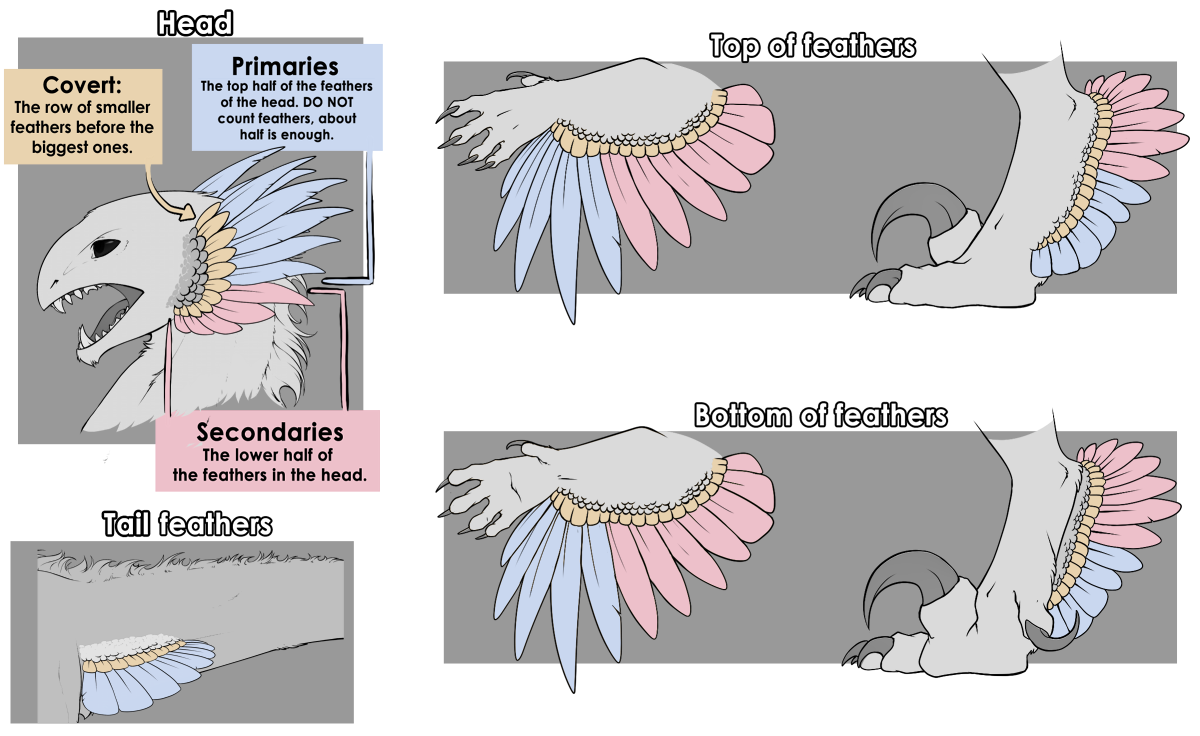
Feathers and fins can mimic marking colors with same rules as markings do.
Common coat marking colors for common coats and rare marking colors for rare coats with exception of Raven/Pearl and Ebon/Velvet
kukuris who can sport rare colors on feathers/fins only if one of the parents or both were Azure/Jade. These marking
colors won't inherit to the children of said Raven or Pearl.
Black and white are allowed freely on feathers.
Marking color rules
Marking rules
Gradient
A soft gradient from the tips of the primary and secondary feathers, and tips of fins. Because of the different shapes of fins, the soft gradient can follow the fin's shape.The gradient must end completely before the coverts and not cross onto them.
Free fill
A color that fills the whole feather/fin area with the same solid color.The whole color layer for the feathers/fins must be filled when using this option
Partial free fill
Primaries and secondaries colored, but leaving the coverts uncolored.Do note that since fins don't have these areas, they can only be colored fully or with a gradient.
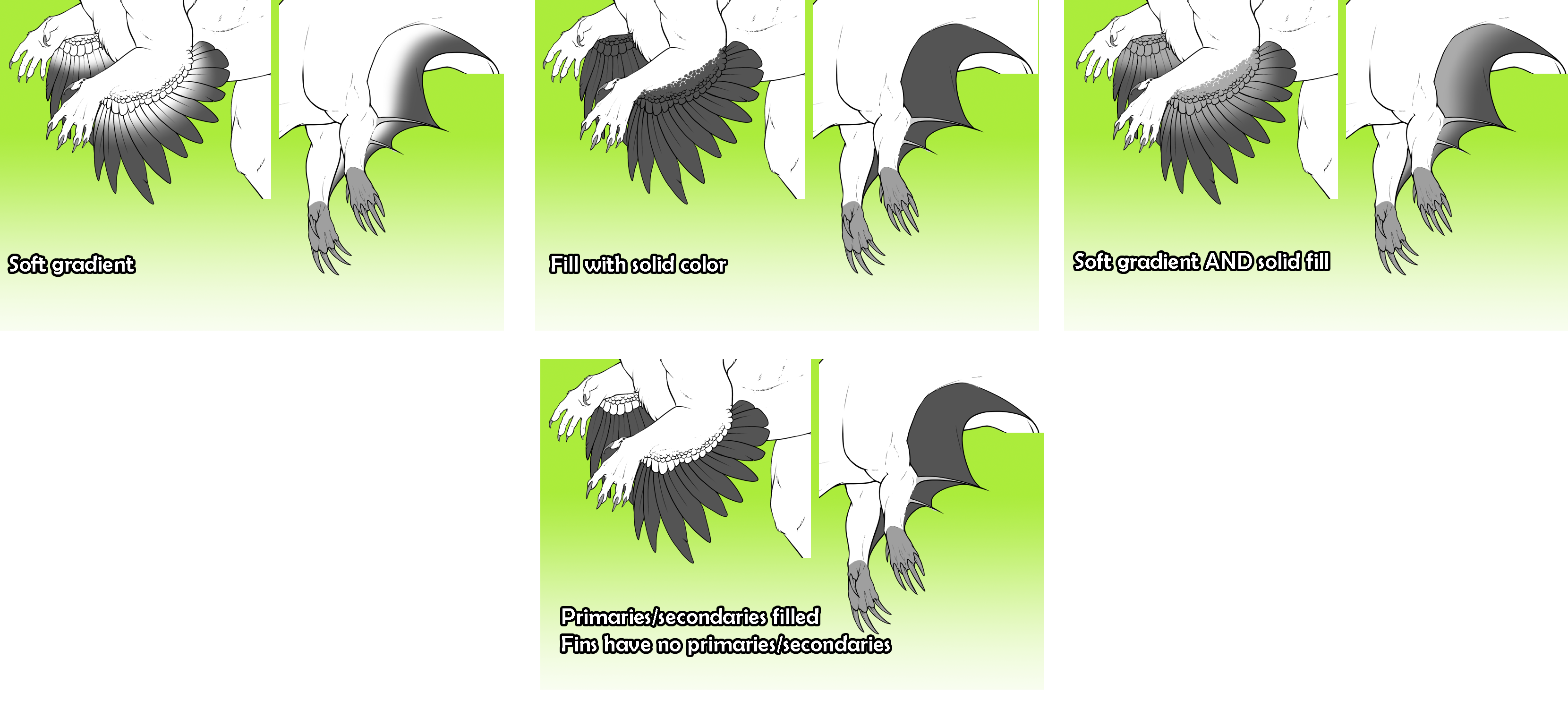
✿ Feathers and fins can't be two different solid colors, or have both lighter and darker color in them without markings affecting them at the same time! You can, however, use both solid fill AND gradient fill, which can be different colors.
✿ Gradient can not start from the stem/base!
✿ The filling of the feathers and fins has to be identical. Please do not mix and match different fillings on feathers/ fins without marking affecting them.
✿ Markings like Socks, Siamese and Tailwind have strict directional filling. Tailwind fills the tail (and feathers/fins on it from the tail tip to the rump). Socks fill the legs from ground up.
✿ Markings like Hood and Blanket only allow for a restricted amount of interaction. Even in their dominant forms, they can not fill feathers/fins in full!
✿ Leaving feathers/fins uncolored if the marking touches them is a fault and will count as a "hole".
✿ If markings appear on feathers/fins it has to be same color as the rest of the marking!
Examples to the right are using Siamese
Not all feather/fin areas have to have filling! Look at the example import below! You could, for example, make a gradient on the hind leg feathers/fins and arm feathers/fins, and leave others uncolored!
